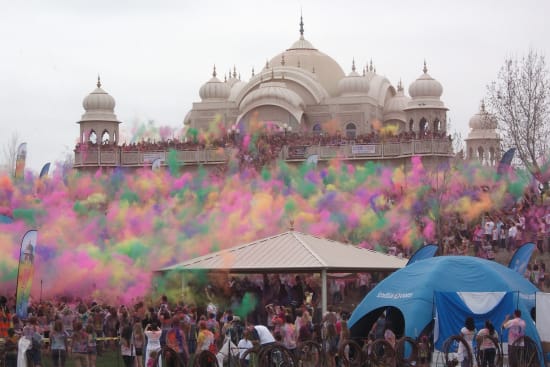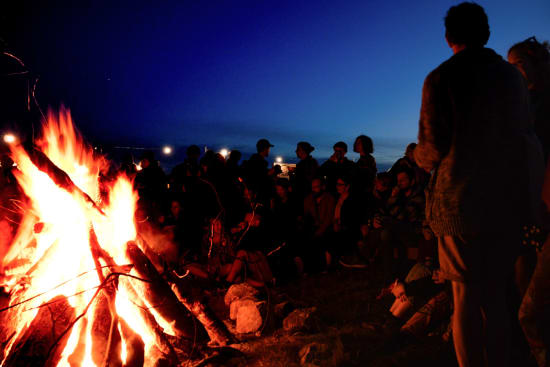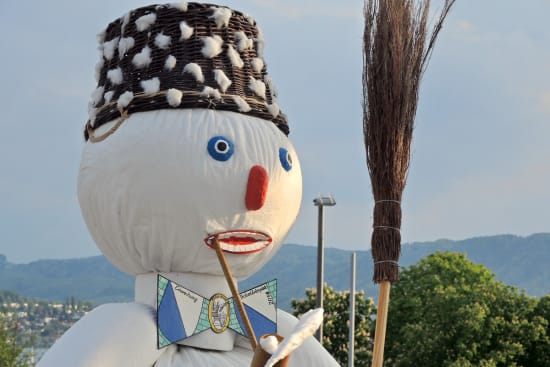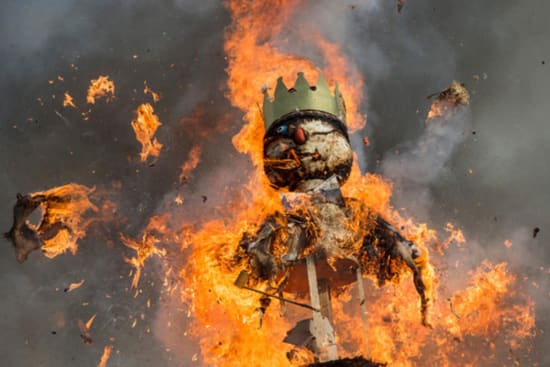Happy and colorful spring traditions
In Zurich, people burn a snowman in spring; elsewhere, people smear their
skin
with colorful powders or burn socks. We all rejoice at the end of winter.

Holi - an enchanting spring spectacle
In India, when the Holi Festival takes place, spring has arrived! People in
India are just as pleased to see the back of winter as we are, and celebrate
the arrival of spring in joyful, boisterous style,
smearing their skin with colorful powders and generally having a good time.
During the festival large bonfires are lit to burn a straw effigy known as
Holika. The effigy symbolizes a demoness who, according to legend,
sat in a burning fire with the King’s son in her lap, intending to
kill the child. But the Hindu god Vishnu intervened
to protect the child whilst Holika burned to death in the flames.

The festival celebrates the victory of good over evil
(and spring over winter).
This joyful festival of colors is now celebrated in many countries around
the world,
and also in Europe – although here it is more of a party style event.

Burning socks, an original spring custom
In Zurich, people say «goodbye» to winter by burning a Böögg.
In Eastport (Maryland),
boat owners burn their socks at the beginning of spring.

For the record: in the mid-1970s, sailor Bob Turner decided to burn his
socks on the first day of spring to walk barefoot on his boat again.
This ritual was repeated every year. Later, he also
invited his collaborators and friends to join him in this symbolic act.
This custom quickly spread until it became a real feast:
with oysters, beer, a live band and, of course, heaps of socks on a fire.

At the Sechseläuten the citizens of Zurich burn the winter
This Zurich festival dates back to the 16th century. At that time,
the council decided that during the summer, the end of the working day
should be set one hour later, i.e. at six o'clock in the evening.
As a sign of the beginning of spring, the second largest bell of the
Grossmünster rang punctually
at six o'clock on the first Monday after the equinox.

This is how the «Sächsilüüte» (literally the six o'clock ringing) began,
which was later fixed for the third Monday in April. In 1902 the Böögg was
added, a snowman prepared with explosives, which is burned on the
Sechseläutenplatz
as a highlight of the Zurich spring festival. It symbolizes winter.
And they say that the faster the Böögg's head explodes, the more beautiful
summer will be.
More exciting topics about spring
Hooray, the days are getting longer again
Finally, it's getting light earlier again. It makes you want to get up right away. What do you associate with spring? And how often do you celebrate it?
A long time ago, the New Year was celebrated in spring
Why did the ancient Romans come up with the idea of starting the year with spring? And why is the first month of spring called «March»? Here are the answers.
Good mood is YELLOW!
Colors provoke emotions. How do you feel about yellow? Here you can find out why we almost all react similarly to this color, especially in spring.
What do snowdrops and storks have in common?
There are many messengers of spring. They all show us that spring is here. In the past, they were not only eagerly awaited, but also duly celebrated.
20 March: Oh Happy Day!
Happiness has many faces. Perhaps the Day of Happiness makes us think about how well we are doing and how we could help others to be a little happier.
Happy and colorful spring traditions
In Zurich, people burn a snowman in spring; elsewhere, people smear their skin with colorful powders or burn socks. We all rejoice at the end of winter.
